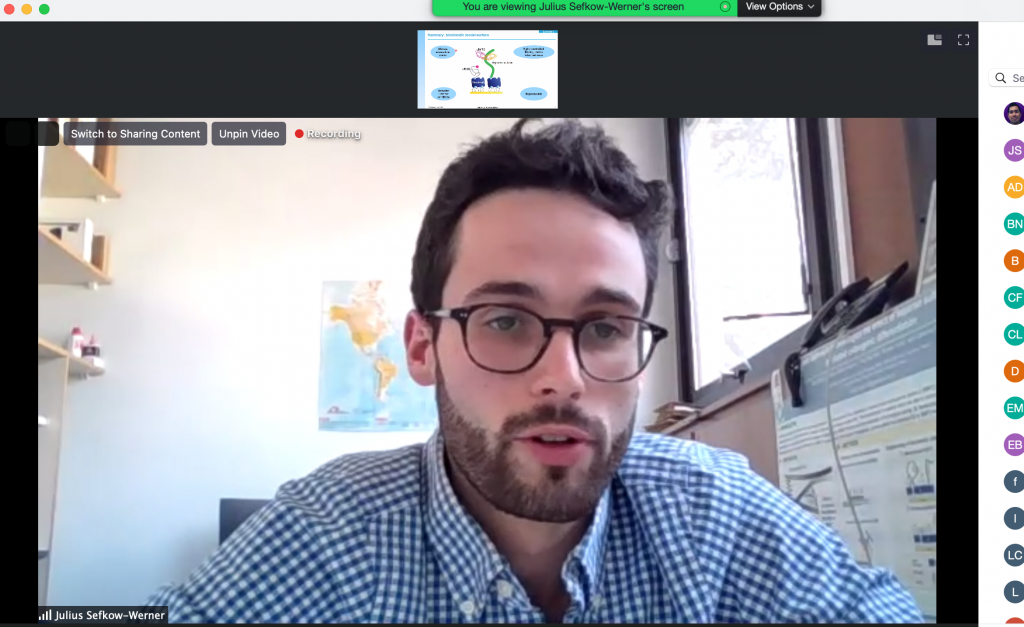The “Bioinspired Materials” axis held its first webinar last 26 November 2020 via the Zoom platform. Julius SEFKOW-WERNER, a 3rd year PhD student at CEA IRIG Departement Santé / Biomimetism and Regenerative Medecine (BRM) gave a talk on, “The streptavidin platform: A versatile tool to mimic the extracellular matrix and to study the role of selected molecules on cell signaling”. The event was hosted by Elisa Migliorini, Emmanuel Belamie and Karsten Haupt. The webinar series of the Bioinspired Materials axis will be held regularly every month and the next webinar is scheduled on 17 December 2020, details for the next webinar will be announced soon.

The abstract of Sefkow-Werner’s presentation is shown below and the recorded presentation will be available in the Private Area (only accessible to GDR 2088 members) of this website in the coming days:
Abstract:
Naturally, cells are surrounded by the extracellular matrix (ECM) whose molecular composition is specific for each cellular niche. In the field of osteogenic regeneration, with its various medical applications such as large bone defect treatment with osteoinductive scaffolds, cell-matrix interaction is a key parameter for efficient material design. Here, an open question is the role of cellular adhesion via integrins on bone morphogenetic protein 2 (BMP2) signaling while it has been shown already that BMP2 improves cellular adhesion (Fourel et al., 2016). Further, we aim to understand the influence of the exogenous glycosaminoglycan heparan sulfate (iHS), the natural ligand of BMP2 in the ECM, on osteogenic differentiation since an up-regulating effect on early BMP2 activity was observed (Migliorini et al., 2017). On engineered streptavidin platforms, we immobilize selected ECM molecules, which are site-specifically biotinylated with the aim to mimic some aspects of the natural environment around bone cells. With a platform functionalized with different surface densities of the adhesion ligand cRGD, controlled with quartz crystal microbalance, we gradually down-regulate the activation of integrins and show their up-regulating effect on BMP2 signaling (Sefkow-Werner et al., 2020). By co-functionalizing the platform with cRGD, iHS and adsorbed BMP2 (aBMP2), mimicking the natural presentation of BMP2, we reveal that heparan sulfate sustained the bioactivity of BMP2 and enhanced osteogenic differentiation. In summary, the streptavidin platform is a versatile tool to distinguish the specific role of extracellular molecules on cells and we are eager to expand and generalize this biometric approach to other cellular niches.
************************************************************
